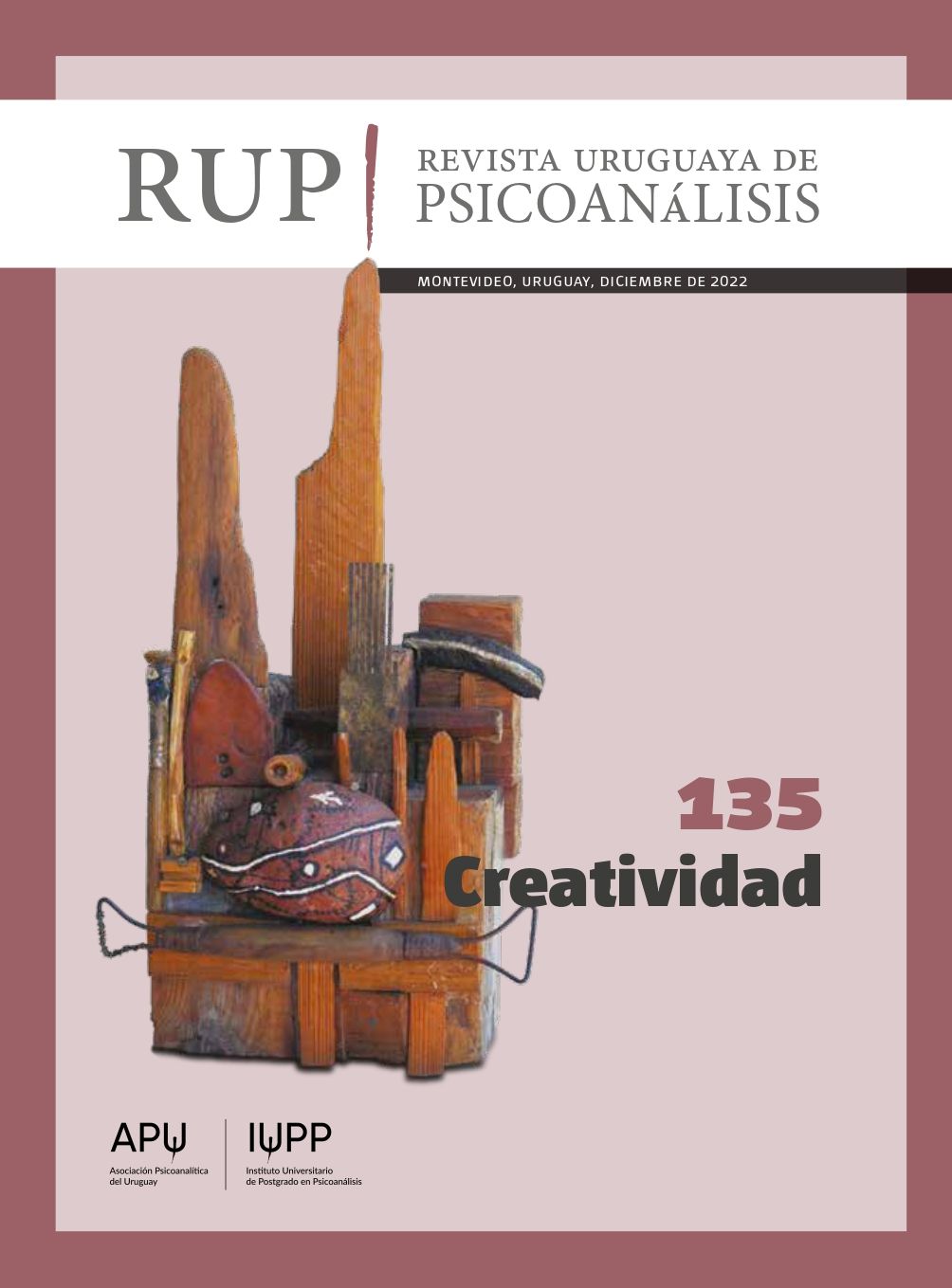De arte y psicoanálisis: a propósito de una exposición
DOI:
https://doi.org/10.36496/n135.a11Palabras clave:
arte, creador, creación, psicoanálisis, sublimación, culturaResumen
«De la creación, mirada, escucha y palabra» fue el nombre que llevó la exposición realizada en julio de este año en el Museo Juan Zorrilla de San Martín, a partir del trabajo del escultor en gres Ricardo Nowinski y la fotografía de contrastes lumínicos en blanco y negro de Manuel Gayoso. Los autores generan un diálogo entre ambas formas de expresión artística; por un lado, con el acto de la creación como experiencia singular, colectiva y cultural; y por otro, tender puentes con el psicoanálisis. Otro intento fue indagar cuál es la relación vivencial subjetiva que enlaza al creador, la obra, con quien la observa; desde allí a la experiencia y suceder transferencial en la función psicoanalítica que, como el arte, da lugar a lo inédito en la sesión. También se aborda una perspectiva sobre la originaria relación del creador del psicoanálisis con el arte. La palabra, aun siendo nexo con la cultura y la historia, intenta explicar, pero no da cuenta el acto creativo. Se abordan también aspectos en los que la posibilidad de creación y arte quedan subsumidos en el «vértigo civilizatorio» contemporáneo
Descargas
Referencias
Casas de Pereda, M. (2007). Sujeto en escena: El significante psicoanalítico. Isadora.
Freud, S. (1979a). El malestar en la cultura. En J. L. Etcheverry (trad.), Obras completas (vol. 21, pp. 57-140). Amorrortu. (Trabajo
original publicado en 1930 [1929]).
Freud, S. (1979b). El porvenir de una ilusión. En J. L. Etcheverry (trad.), Obras completas (vol. 21, pp. 1-56). Amorrortu. (Trabajo
original publicado en 1927).
Freud, S. (1980a). El Moisés de Miguel Angel. En J. L. Etcheverry (trad.), Obras completas (vol. 13, pp. 213-242). Amorrortu. (Trabajo
original publicado en 1914).
Freud, S. (1980b). Tótem y tabú. En J. L. Etcheverry (trad.), Obras completas (vol. 13, pp. 1-164). Amorrortu. (Trabajo original publicado en 1913 [1912-1913]).
Laplanche, J. y Pontalis, J.-B. (1983). Diccionario de psicoanálisis. Labor. (Trabajo original publicado en 1967).
Morra, J. (2018). Cuando el arte y el psicoanálisis se encuentran: Aventuras críticas en el Museo Freud de Londres.Calibán, 16(1), 157-168.
Nasio, D. (2015). Arte y psicoanálisis. Paidós.
Pessler, M. (2018). Arte contemporáneo en Berggasse 19, Viena. Calibán, 16(1),152-154.
Read, H. (1957). Imagen e idea: La función del arte en el desarrollo de la conciencia humana. Fondo de Cultura Económica.(Trabajo original publicado en 1955).
Remedi, G. (3 de diciembre de 2021). La cultura es lo de todos los días: a 100 años del nacimiento de Raymond Williams. La Diaria. https://ladiaria.com.uy/cultura/articulo/2021/12/la-cultura-es-lo-de-todos-los-dias-a-100-anos-del-nacimiento-de-raymond-williams/
Roudinesco, E. (2015). Freud, en su tiempo y en el nuestro. Debate.
Viñar, M. (2009). Mundos adolescentes y vértigo civilizatorio. Trilce.
Winnicott, D. W. (1987). Realidad y juego. Gedisa.(Trabajo original publicado en 1971).
Zito Lema, V. (1992). Conversaciones con Enrique Pichon-Riviere sobre el arte y la locura.Cinco.
Descargas
Publicado
Número
Sección
Licencia
Derechos de autor 2023 Revista Uruguaya de Psicoanálisis

Esta obra está bajo una licencia internacional Creative Commons Atribución 4.0.


 This work is licensed under a
This work is licensed under a 